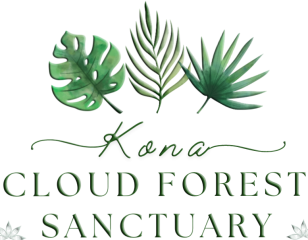Add Food and Vitamin Producing Plants To Your GARDEN!
We have come to a time when we need to depend more on our gardens and what they can produce to keep our food costs lower and products locally grown. Humans have had an impact on the world’s ecosystems for a long time. Some regions where humans and other mammals have thrived have changed the…
FERTILIZE WITH ORGANICS FOR HEALTHY VEGETABLE GARDENS
It is time to think about planting your vegetable garden to minimize the effects of increasing food bills.. This week and for the next few weeks let’s consider a landscapes that feed us. You might even want to take the organic approach. Since our soils have lost many nutrients let’s look at the best sources…
HAWAII ISLAND FORESTS AND GARDENS THREATENED WITH GLOBAL WARMING
April showers bring Mayflowers or at least it used to be that way. Some parts of our island have had an extended lack of rain this spring. Everything is topsy turvy when it comes to weather patterns, but we are beginning to get some much needed rain both in East and West Hawaii. This should…
HAWAII WITHOUT PALMS WOULD BE POOR INDEED
This weekend is Palm Sunday and commemorates Jesus’ triumphal entry into Jerusalem. According to the Gospels, it was a week before his crucifixion, when crowds greeted him with Date Palm leaves and shouted “Hosanna” acknowledging him as their king. He came riding on a donkey, fulfilling the prophecy in Zechariah 9:9.This Sunday marks the beginning…
A Perfect Lawn Can Be Challenging
If you are maintaining turf on a golf course, it has to be almost perfect. However most folks aren’t held to such high standards when it comes to a home garden. The important thing to know is that plants produce oxygen and sequester carbon thus helping to reduce the amount of carbon dioxide in the…
Mulches Help To Build Soils And Conserve Water
After 45 years of living in the cool mountain mists of Kaloko Mauka’s Kona Cloud Forest Sanctuary, we have decided to move. Life at 3000 feet elevation and 100 inches of well distributed precipitation makes almost anything easy to grow except ultra tropical plants like coconut palms and breadfruit. Due to getting older, we have…
Tropical Gardening: March comes like a lion, and leaves like a lamb
The old saying that March comes like a lion and leaves like a lamb usually holds true, but this year, only time will tell. Spring flowering trees are on schedule like the cherry blossoms of upland Waimea. Check them out soon before they disappear for another year. As they begin to fade, blue jacaranda, silver…
Tropical Gardening: Fertilizer
March has a lot of history, hope and lore associated with it. For some superstitious folks, “Beware the Ides of March,” a quote from Shakespeare’s Julius Caesar, brings a sense of foreboding. Searching history, you can find yourself going down the rabbit hole seeking where it all started. The Book of Esther refers to the…
Tropical Gardening: The world calls with tropical fruits
A trip to less industrialized tropical and subtropical regions of the world can be very enlightening in some unexpected ways. By visiting these places, we can learn more about what tropical fruits are integral to the colorful cultures of the world. Most may be grown in Hawaii with our varied climate from tropical to temperate….
Tropical Gardening: Hawaii almost perfect, and the DOA wants to keep it that way
Some might disagree, but recent travels in the tropical world to discover a better place has brought me to the conclusion that we are blessed and should appreciate what we have here at home. Foremost is the aloha expressed in the way we treat one another. When it comes to our natural environment, our islands…
